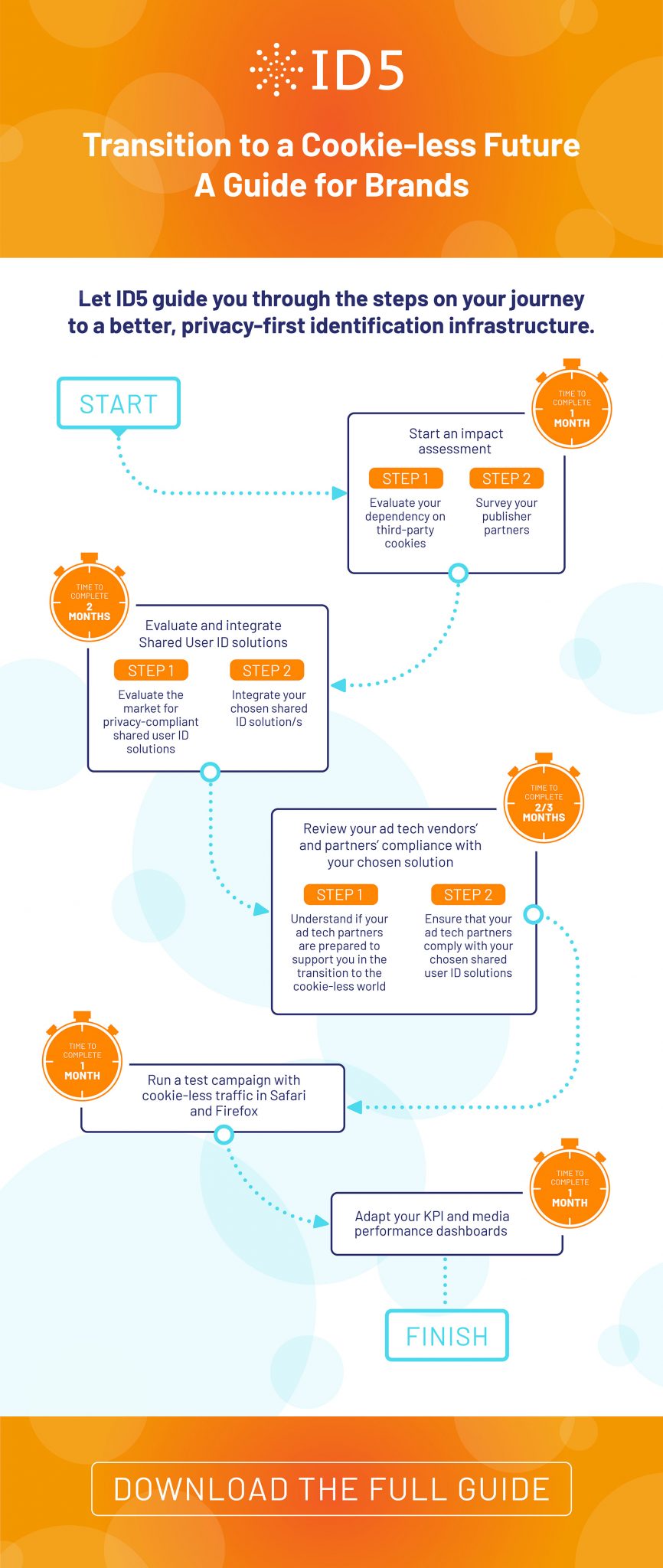
How Should Brands Make Their Transition to a Cookie-less Future?
- Posted by Jo Rosamilia
- On Nov 29, 2021
ID5 publishes a guide outlining all the steps advertisers need to take to successfully migrate to a better, privacy-first identification infrastructure
Marketers and media planners have for years relied on third-party cookies to deliver the right message to the right user at the right time. But the era of the third-party cookie is coming to an end. Safari and Firefox have already stopped supporting third-party cookies and Chrome will be sunsetting them from 2023.
Continuing to rely on the current cookie-based infrastructure for much longer is not an option considering the limited timeframe. Yet many brands have still not started their migration journey. Since Google’s announcement on the deprecation of third-party cookies, brands have been presented with many different solutions and methods to survive the cookie apocalypse. This has created lots of confusion, preventing some advertisers from taking action.
Using Shared User IDs to solve addressability and measurement
Recent success stories demonstrate that shared user IDs are an effective solution to the issue of addressability and measurement in the absence of third-party cookies. ID5 has therefore created a step-by-step guide for brands which explains the process they need to follow to implement shared user ID solutions. From impact assessment and integration with shared ID solutions to compliance review and KPI & media performance dashboard updates, we have outlined everything brands need to be aware of in the migration process. See our infographic below for the steps involved:
Access Our In-Depth Guide
Have you prepared for the departure of third-party cookies yet? Download our in-depth guide to understand the steps you need to take to implement shared ID solutions and reach cookie-less audiences effectively today, in Safari and Firefox, and tomorrow in Chrome.

